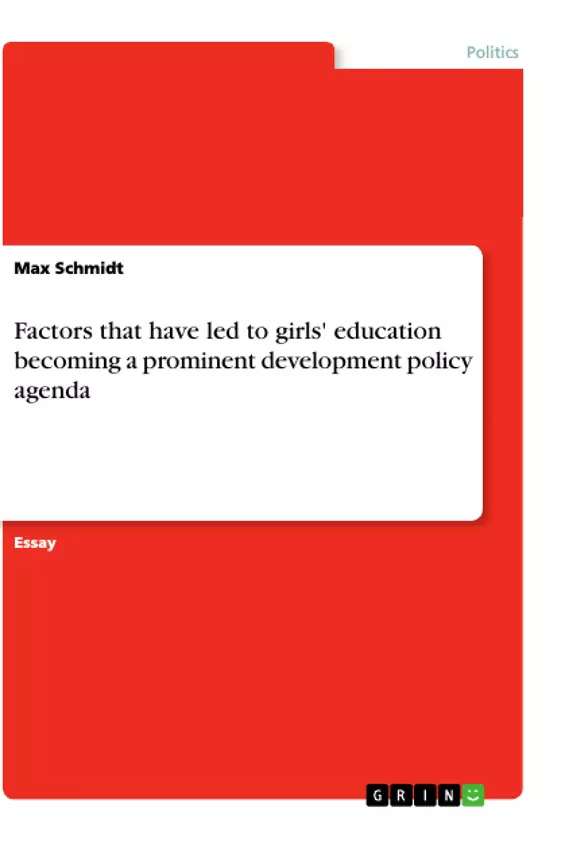This essay sets out to trace the factors of why and how girls' education became such a prominent development policy agenda. For this purpose, several development organisations and the methodologies of well-known reports will be scrutinised from both quantitative and qualitative angles, including diverse understandings and common themes. Ultimately, a brief outlook will be given.
In most parts of the Western world and beyond, almost no other topic of the development policy agenda can be considered as uncontested as the promotion of girls’ education (GE). Going hand in hand with liberal human values and as a means of justification for other developmental interventions, promoting GE is frequently perceived as one of only a few ‘truly global’ notions and indicators of progress. Chosen by the anti-extreme poverty ONE Campaign as the first two of their “10 quotes that tell us the importance of investing in girls’ education”, the quotes above highlight common themes associated with the empowerment of girls and women via the means of education: reasonable investment, societal progress and security.
Hardly contestable if not deconstructed, these quotes simultaneously represent entry points for more critical discussions of the anything but uniform notion of GE by raising, among others, the questions of: Which forms of stability? Strong, free and educated in which regards? Can there be a single ‘real development’? Can human beings be ‘(best) investments’ at all?
Inhaltsverzeichnis (Table of Contents)
- Definitional and methodological blurredness of GE
- GE in a neoliberal policy framework
Zielsetzung und Themenschwerpunkte (Objectives and Key Themes)
This essay aims to trace the factors of why and how girls' education (GE) became such a prominent development policy agenda. It argues that this circumstance is due to two central characteristics of GE: its extraordinary definitional and methodological blurredness, rendering it almost common-sensical; and its frequent facilitation as a panacea within a wider neoliberal policy framework.
- The definitional and methodological blurredness of GE
- The role of GE as a panacea within a neoliberal policy framework
- The impact of GE on societal progress and security
- The benefits of GE for individuals and communities
- The importance of considering different perspectives on GE
Zusammenfassung der Kapitel (Chapter Summaries)
- Definitional and methodological blurredness of GE: This chapter explores the lack of a widely agreed upon definition and set of indicators for GE, despite its prominence in the development policy agenda. It examines the varied understandings of GE presented by different organizations, including the World Bank, UNICEF, and the Malala Fund. The chapter highlights the potential link between the blurry indicators and ideological purposes, suggesting that the collection and interpretation of GE data may be influenced by the institutions involved.
- GE in a neoliberal policy framework: This chapter examines how GE is frequently presented as a solution to broader development challenges within a neoliberal policy framework. It analyzes two report series – the Global Gender Gap Reports by the World Economic Forum and the Results Reports of the Global Partnership for Education – to illustrate how GE is often operationalized and measured in a way that reinforces neoliberal assumptions. The chapter discusses the limitations of these reports and their potential impact on development policy.
Schlüsselwörter (Keywords)
The essay focuses on the key concepts of girls' education, development policy, neoliberalism, definitional and methodological blurredness, data collection, and indicators. It examines how these concepts intersect and influence the framing and implementation of development initiatives related to girls' education.
- Arbeit zitieren
- Max Schmidt (Autor:in), 2020, Factors that have led to girls' education becoming a prominent development policy agenda, München, GRIN Verlag, https://www.hausarbeiten.de/document/978886


